|
THE SAWFISH
Ischyrhiza mira (Leidy)
Age Cretaceous - Occurrence Common
The sawfish is not a shark but
a
skate. These somewhat common “teeth” that are collected in the
streams of NJ are really the rostral spines that lined the elongated and
flattened bill of the skate. These spines are unique and and easy to
identify. Not nearly as distinctive are the oral teeth
of Ischyrhiza mira. These are common, but their small size (3 mm)
requires the use of a fine meshed screen when collecting.
The Cretaceous sawfishes (order Sclerorhynchiformes) are not related
to the modern sawfishes
(Pristiformes). They differ from modern
sawfishes in a number of ways, the rostral spines have an enamel
coating and are not set into sockets. Instead, the spines are
connected to the rostrum via connective tissue and are continually
replaced (rather than continually growing but never replaced as in
the modern sawfishes).
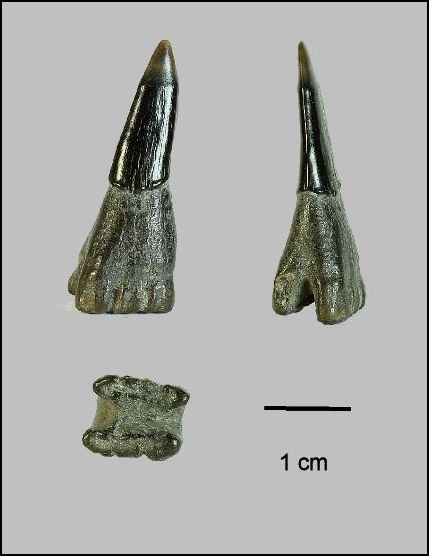
Plate 1
Ischyrhiza mira rostral
spine.
Monmouth County, NJ
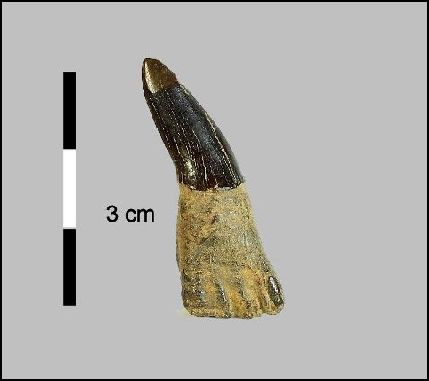
The rostral spines can get large, examples up to 6 cm
have been reported.
This specimen is one of my largest at 3 cm or about 1 1/4 inches.
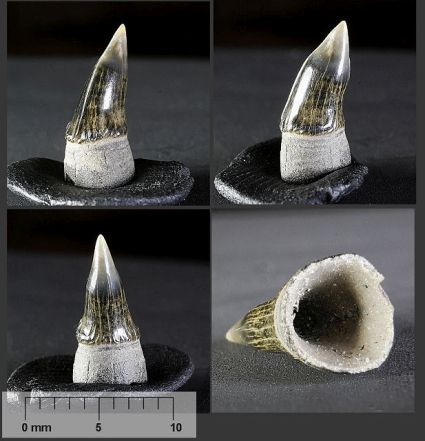
Plate 2
Identified as a
I. mira posterior rostral spine by
Dr. Earl Manning.
The base of the root has broken off exposing the hollow interior.
"A word about the broadly hollow core of the rost. dent. is needed.
Meyer (1974, fig. 23)
pointed out that one of the differences between the more primitive lt.
Turonian I. mira schneideri Slaughter & Steiner, 1968, and the
more derived lt. Santonian to lt. Maastr. I. mira mira Leidy,
1856, is that the latter has an enlarged pulp cavity, when compared to
the former." (pers. obs., E. Manning)
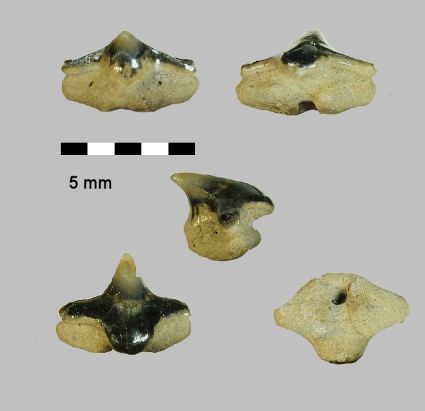
Plate 3
Ischyrhiza mira oral teeth.
Monmouth County, NJ
The oral teeth are fairly common when using a fine mesh screen. The
long sharp heel and large apron make these teeth easy to identify.

Ischyrhiza mira oral teeth are small,
3 - 4 mm across (about 1/8 inch).
Collecting requires the use of a fine mesh screen.
Additional Photographs
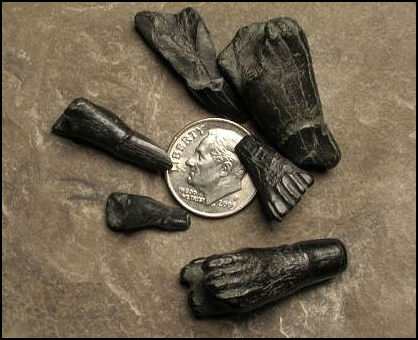
The enamel portion of the rostral spine is very prone
to snapping.
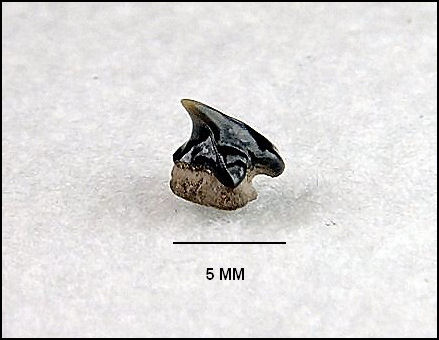
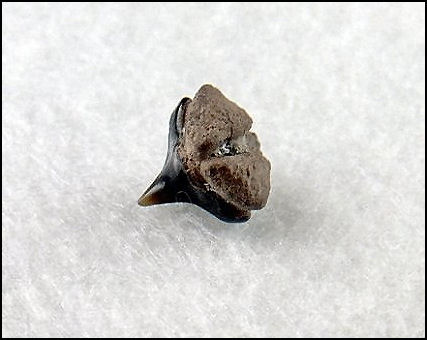
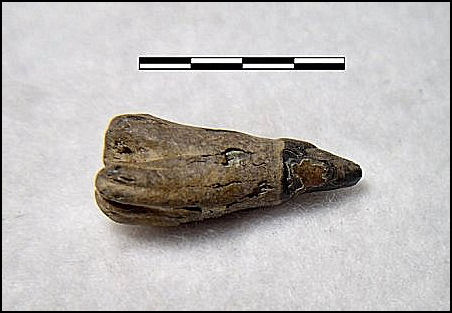
Scale 1 inch
Return to top of page |